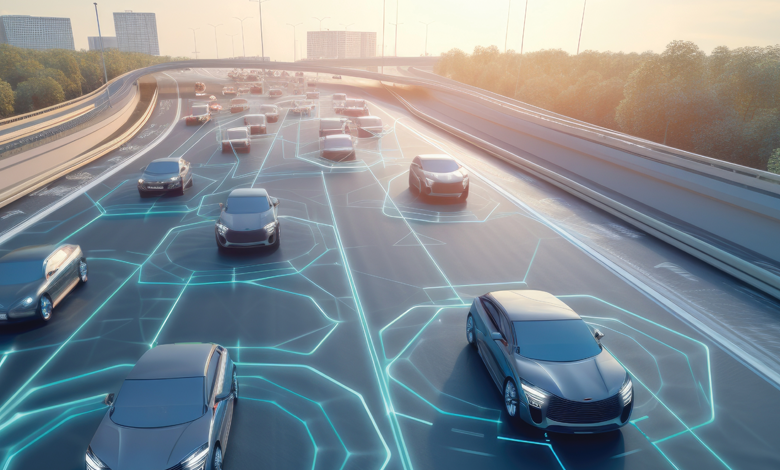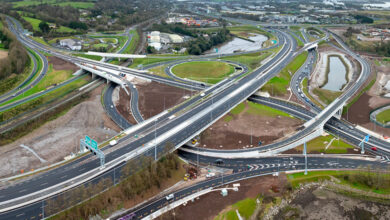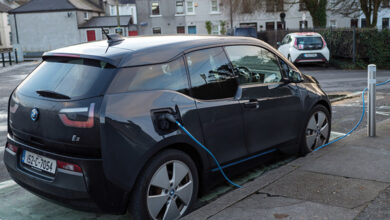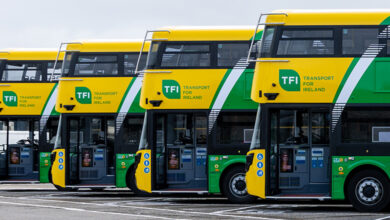The role of AI in Vision Zero

The intersection between road safety and technology has been on a long journey since the days of Mary Ward, the first recorded casualty of a road traffic incident back in 1869, underscoring our longstanding mission for safer roads, writes Brendan Walsh, Chief Operations Officer at the Road Safety Authority.
Today, as we stand in an era where technology has leaped bounds, artificial intelligence (AI) emerges as a potentially pivotal tool in this ongoing journey. It is imperative that we consider the transformative role AI can have in enhancing road safety. As we examine the integration of AI into our road systems, we focus on its practical applications and the tangible benefits it can bring to road safety.
Forty years ago, in 1983, Ireland witnessed 535 road fatalities, and in the subsequent years, over 11,000 people have lost their lives while going about their daily activities. As of 2023, the trend indicates that this year might be the deadliest in the past decade.
Over the past 40 years, how we use the road network has evolved significantly. Vehicle safety systems have advanced beyond recognition compared to those of the 1970s and ‘80s. Major road infrastructure investments and designs are now comparable with our EU neighbours, and our attitudes towards driving under the influence of alcohol have dramatically changed. While we can see improvements from 1983 to 2022 (535 fatalities versus 155 fatalities), we still face the challenge of eradicating this societal scourge, akin to losing an aircraft full of people every year over the last decade.
The Road Safety Strategy (RSS) has identified 186 actions aimed at making our roads safer for all users. However, with the advent of AI, we must ask how AI can support our goal of zero deaths and zero serious injuries by 2050. The investment in vehicle safety by manufacturers, both cars and trucks, has been significant. Over two decades ago, advanced driver assistance systems (ADAS) emerged. Back then, the technology used radar detection that required precise calibration by a technician; otherwise, your vehicle might end up following the car beside you on a motorway instead of the car directly in front of you.
Today, vehicle manufacturers are competing to develop autonomous vehicles (AVs) driven by changes in safety regulations and the increasing demand for “safe vehicles”. Additionally, smartphones’ ability to connect to the environment and provide traffic congestion information has offered unprecedented levels of information and safety. So, what is the barrier to further reducing road deaths? Before we delve deeper, it is important to define what an AV actually means. The Society of Automotive Engineers (SAE) has developed a widely adopted classification system with six levels based on the level of human intervention:
Level 0: No automated features. The driver is in complete control.
Level 1: Equipped with one or more primary features, like cruise control, but requires the driver to perform all other tasks.
Level 2: Equipped with two or more primary features, like adaptive cruise control and lane keeping, which work together to relieve the driver from controlling those functions.
Level 3: Allows the driver to relinquish control of the vehicle’s safety-critical functions under certain conditions. The driver is expected to take over after a transition period.
Level 4: The vehicle can perform all aspects of driving, even if the driver does not respond to a request to intervene.
Level 5: Fully autonomous, capable of monitoring roadway conditions and performing all driving tasks throughout the trip, with or without a driver present.
“AI has a significant role to play in reducing road deaths to zero. It is for humans to identify and prioritise how best to optimise this intelligence.”
Sam Waide, CEO, Road Safety Authority
Let us consider the infrastructure that our vehicles use. Much of the western world’s road and traffic infrastructure, especially in cities like Dublin, London, and Cork, dates back to the mid-20th century, with routes established during the Victorian era for horses and people. Today, our councils and corporations continue to invest in such infrastructure, with limitations to add new routes. The addition of bus lanes and cycleways has provided extra capacity to support safe road use, but as populations grow, we need to offer new solutions to meet societal needs. We have created vehicles that can “think for themselves”, and created the opportunity for technology enabled roads to enhance road safety whilst ensuring continual flow of people and goods. How do we harness AI to integrate with our road networks and achieve our Vision Zero target, the ambitious goal of eradicating road fatalities? Cities like Amsterdam, London, and Los Angeles are developing connected intelligent transport systems (C-ITS).
This technology allows vehicles to connect with each other, their environment (e.g., traffic lights, road signage), and other parts of the transport network, reducing collisions. This is achieved by enhancing “signalised intersections” with features like:
• signal phase and timing information;
• emergency vehicle priority;
• green light optimal speed advisory;
• imminent signal violation warning; and
• traffic light prioritisation.
To support these emerging technologies, it is important that we build an ecosystem with the human at its core. This of course will be a challenge – if the machines are thinking for us what do we have to worry about? Do any of us think about knocking off a kettle when it comes to the boil as our grandparent had to? Of course not. That is why it is our role to ensure we are educated on “safe road use”. To this end, the RSA has commenced reviews to its National Driver Licencing Service, driver education and driver testing programme and vehicle testing programmes to ensure that the services meet the needs of the road user into the future and to deliver on our Vision Zero commitment.
It is important to consider what we can do today. A simple example is the impact of good road repairs on ADAS systems. This has resulted in our driver testing team having to consider how a vehicle with lane assist interacts with the road.
These systems are designed to pick up the marker line on the roads. However, in our cities it is necessary to join the seam of a road repair with a filling agent, thereby creating a new line on the road. Unfortunately, this results in the vehicle picking up this road repair as a marker line and results in the vehicle correcting against the false marker. Quite concerning if you are a learner driver or under test at the time. It would appear that we not only need to continue to educate safe road use but that we need to continue to develop the technology to ensure safe vehicles.
In conclusion, as we navigate the ever-evolving landscape of road safety, the integration of AI can act as a powerful tool, guiding the path to a safer future. Our commitment to Vision Zero is not just a target, but a promise to future generations. By marrying technology with human insight, we can turn the tide against road trauma. As we continue to refine our strategies, from enhancing vehicle technology to educating road users, let us remember that every step taken is a stride towards a world where road deaths are a thing of the past.
W: www.rsa.ie






